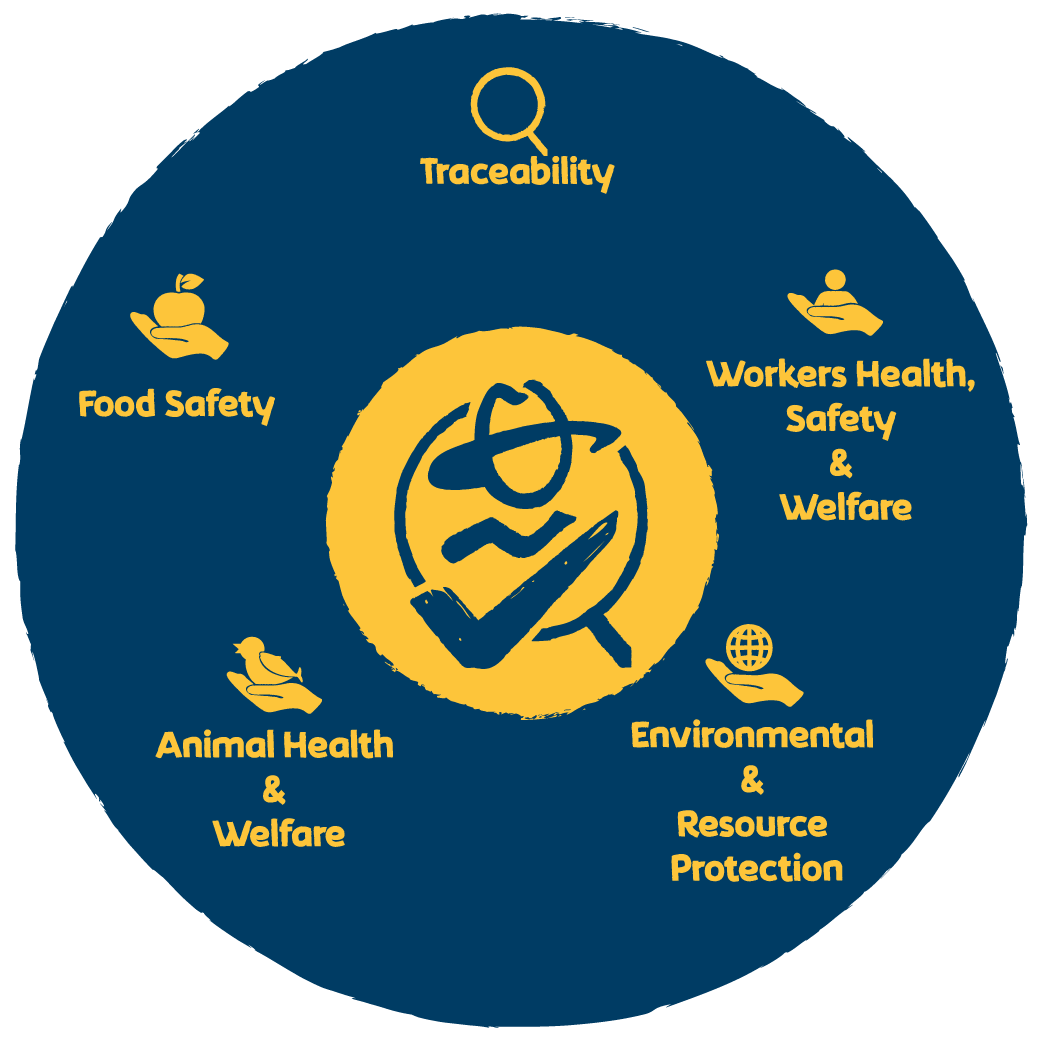The foundation of the GGN label is an internationally recognized and accredited set of GLOBALG.A.P. standards that aim to promote food safety, environmental protection, animal health and welfare, workers' health, safety, and welfare, and supply chain transparency.
The GLOBALG.A.P. Integrated Farm Assurance standard (IFA) covers agriculture, floriculture, aquaculture with certified producers in more than 130 countries worldwide.
It standard specifies a set of rules and requirements that farms must comply with to demonstrate the implementation of responsible farming practices on the farm and become certified.
Certification bodies – a network of third-party, independent and accredited organizations – audit the farms and issue the certificates.
Standard rules, called compliance criteria, are developed in coordination with a wide range of industry stakeholders, including producers, retailers, government agencies, and NGOs, and so reflect the current demands of the market as a whole.They also undergo public consultation to ensure everyone has the chance to submit feedback.
Certification and certification body activities are also overseen by an integrity program, the first of its kind in food certification, to make sure the standard is being implemented correctly and consistently according to the rules.
Products with the GGN label show that:
- An auditor from an accredited and independent certification body approved by GLOBALG.A.P. has checked the production process on the farm and found that it fulfils the requirements of the IFA standard.
- The farm was also assessed to see if it complies with strict rules and regulations to protect its workers’ health, safety, and welfare under the GLOBALG.A.P. Risk Assessment on Social Practice (GRASP).
- Certified products that leave the farm gate and reach your market are not mixed with non-certified products at any stage in the supply chain. This is monitored through the GLOBALG.A.P. Chain of Custody (CoC) standard.
- The certification body has also been checked to make sure that the standard is being implemented correctly.


